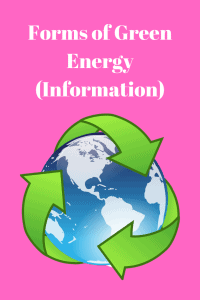
Green energy is any energy produced in a process that has a less negative impact on the environment.
Currently, there are many sources of green energy that are grown by private researchers and even governments.
All of them strive to make these sources of environmental energy the dominant way of supplying energy in modern society to prevent further degradation of the earth.
Green energy comes from various natural sources, such as wind, sunlight, plants, light, and more.
All of these resources are renewable and may have a less environmental impact than fossil fuels.
It uses the resources available in this world, replacing fossil fuels in all major areas, such as electricity and water.
There are different forms of green energy.
Here are some important types of green energy:
If the human race would like to survive in the future, then sooner or later we may need to find new ways for us to meet the needs of electricity.

Currently, most of our electrical supply comes from non-renewable sources such as the burning of fossil fuels like natural gas and coal.
These types of energy sources have a lot of bad effects on the environment as it causes both water as well as air pollution which may be detrimental to the health of the people.
It also becomes one of the main factors which leads to people having diseases such as heart attack, respiratory problems, and cancer.
So now that we know that we need to have an alternative to the non-renewable energy sources, let’s explore the choices that we have in the future to be able to meet the electricity needs of the people.
– Solar power
It is the most common form of energy based on sunlight. Solar energy can be collected and used in different ways. Electricity can be produced from trapped sunlight.
Although solar power has a higher capacity, it lags because fossil fuels were available at a lower price than solar power.
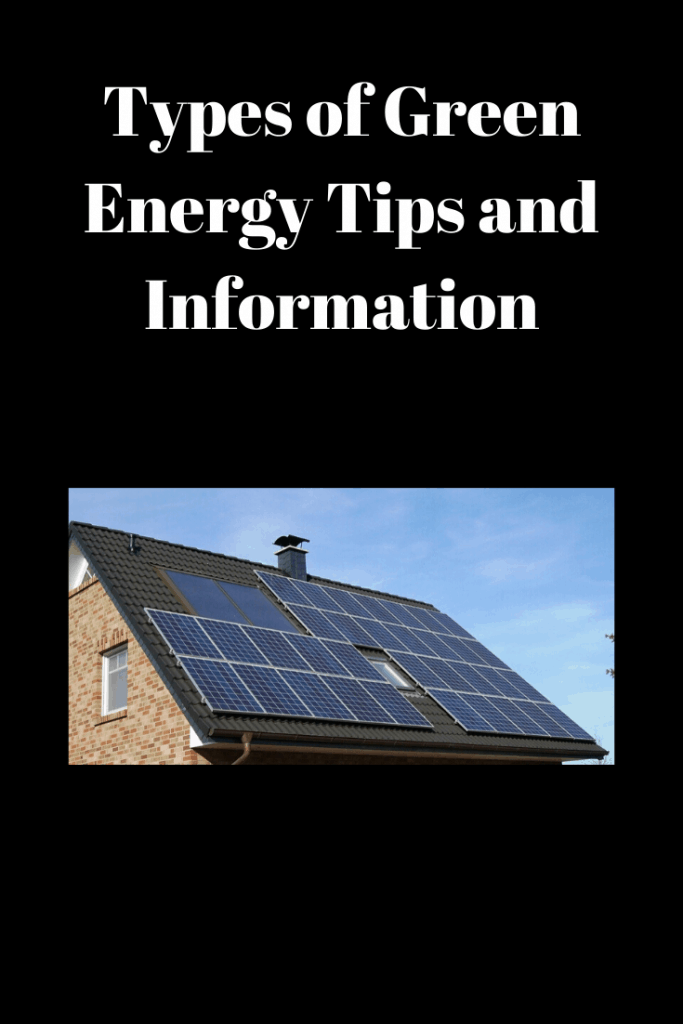
Because there is not enough fossil fuel, we have to wait again for this option.
It is by far the best alternative compared to fossil fuels where smoke remains in the air and thus pollutes the environment.
Furthermore, currently, there are two major kinds of solar power which are the solar power plant and the solar power for homes which usually can be found in residential areas.
Although recently solar power has got the attention of the people, there are some problems that are yet needed to be solved.
Firstly, although the production of energy of solar power is greener compared to that of fossil fuels, the process of manufacturing the solar panel is quite expensive and some people cannot afford to buy a solar panel.
However, in a recent development in solar power technology, the cost of producing solar panels has decreased which makes it affordable for people to buy so that they would not have to depend fully on the utility company for their own power needs.

– Wind energy:
Wind energy is already spreading around the world, and its power is steadily increasing, which does not significantly reduce energy bills for millions of people around the world, but more importantly, it is the main driver of global warming.
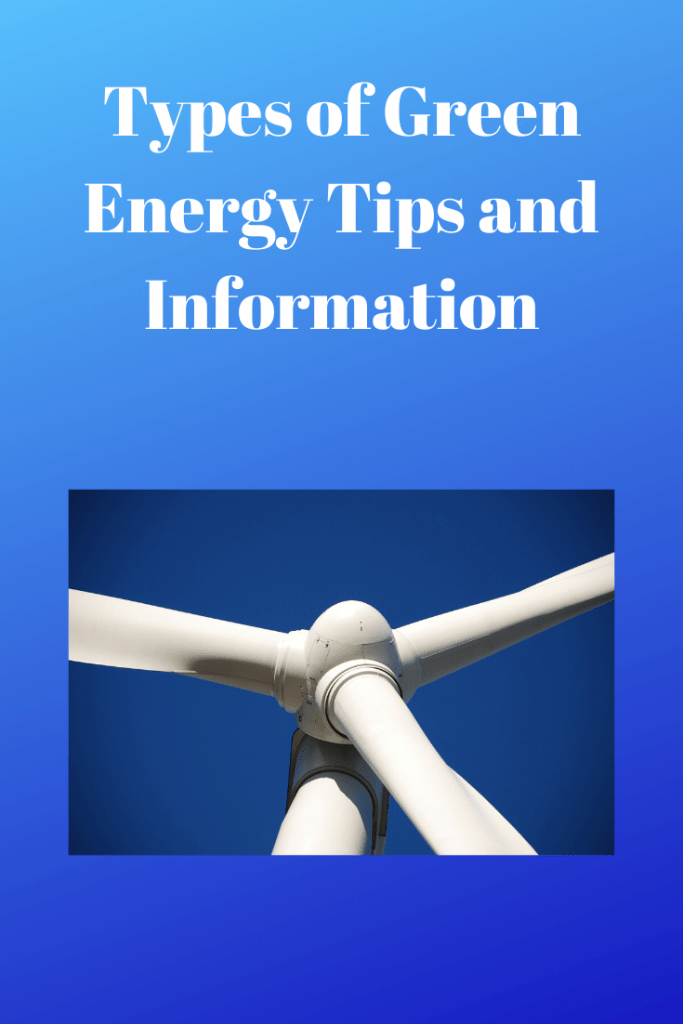
The reason helps reduce our dependence on fossil fuels.
Over the last five years, rapid improvements in the production and performance of wind turbines have contributed to the fact that wind power is a very cost-effective alternative to conventional energy sources.
Furthermore, the secret to being able to maximize the generation of electricity from the wind is by strategically placing the energy generator in a place that has a high altitude where the velocity of the wind tends to be higher.
The power generation that can be harvested there will be much higher resulting in a higher amount of electrical supply to the energy grid. Wind power is also known to be cheaper compared to that of the solar-powered panel and it is easier to be constructed.
No pollution is produced in the process of generating energy and the only disadvantage of wind power is that it blocks the view of someplace but the most important thing is that it does not produce any pollution and cause any disease like that of fossil fuels.
– Hydropower
It is also called water energy produced in the water cycle. This is not as renewable as other sources. Renewable energy production is becoming more expensive.
Moreover, hydropower is known to be one of the largest producers of green energy as hydropower alone accounts for 70 percent of the production of green energy.
The way hydropower works are that there will be a specific installation underwater which will be placed where the current of the water tends to be strong.
When the strong currents of water flow through this installation, the mechanical push by the strong current of the water will be converted to electrical energy and the electrical energy will then be flowed to the energy grid.
– Geothermal energy:
This is energy from the Earth, and the main source of energy is the heat contained on the earth.
It is more renewable because it is abundantly available and can, of course, replace existing fuel consumption.
This can reduce dependence on fossil fuels and can be used anywhere, which leads to lower energy costs.
Although available in abundance, there are several problems that prevent us from using this geothermal energy.
– Nuclear energy
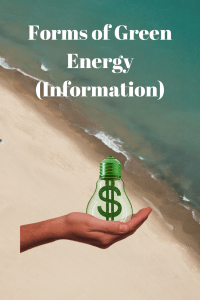
It is produced by cheap controlled nuclear reactions. Commercial and utilities currently use fission reactions to heat water to produce steam, which is then used to generate electricity.
Nuclear power can be very efficient, but it requires very complex and expensive resources to service the station.
Of course, the dangers are also too great for any nation that operates or is attempting to operate a nuclear power plant, which usually argues with the rest of the world.
To sum up this section, one of the goals of using green energy is the use of fossil energy technology and its purification, with particular emphasis on the alternative form of greener and cleaner energy.
The success of any energy depends on the ability to remove harmful by-products from fossil fuels, being not only an effective form of energy but also the ability to produce economical, environmental energy that does not compromise.
Why use green energy?
Green energy is an energy that produces little or no by-products that destroy the environment.
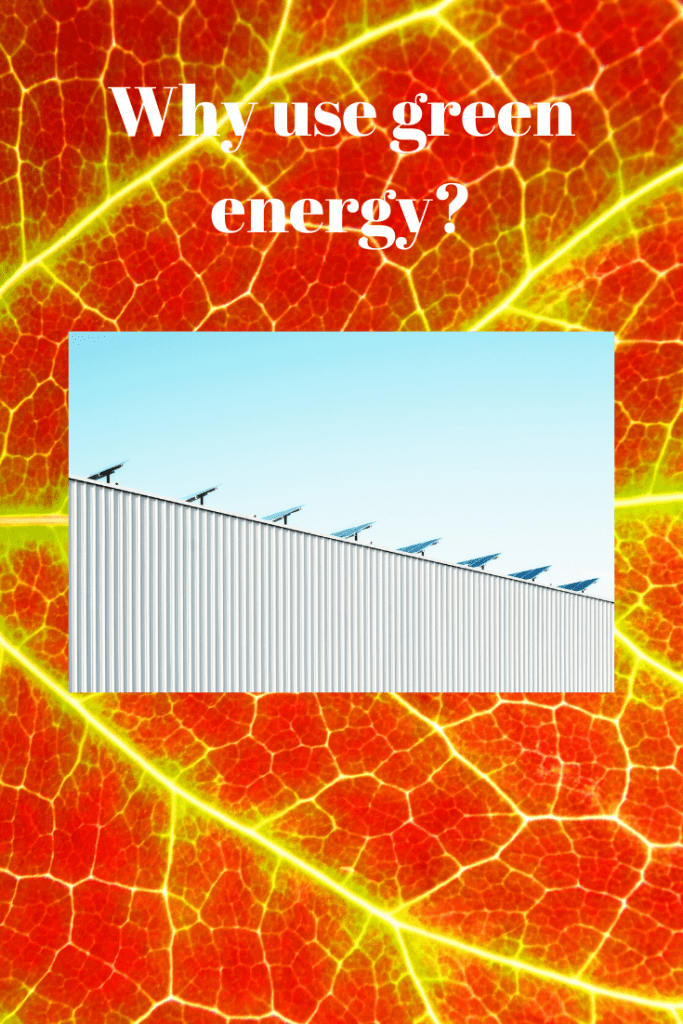
As the environment changes dramatically due to the greenhouse effect and the constant struggle against oil prices, many people are beginning to look for innovative ways to meet their energy needs.
While there may be a debate about whether energy is sustainable enough to meet current energy needs, numerous studies show that it can be a viable option. Still not sure why use green energy? Here are three reasons why.
Cheaper in the long run
It may seem that green energy can save a lot of money on long-term electricity bills.
Of course, you may have to spend a lot of money, for example, to build a solar panel or wind turbines, but as soon as you learn how to use these tools to your advantage, you do not have to use the electricity that your companies have. It provides so much.
Better for the environment
Since it is known that solar and wind energy come from renewable sources, green energy is considered the best choice for the environment.
In addition to the fact that these sources do not emit greenhouse gases as a by-product and do not require the use of large power plants, this dramatically simplifies the entire process for consumers.
Potentially eliminates the need for fossil fuels.
Finally, green energy can eliminate the need for fossil fuels. As you have already heard, fossil fuels not only account for 70% of environmental degradation but can be quite expensive, which leads to increased costs.
Although some power plants are designed to provide energy to fossil fuels using the most efficient means, it cannot be denied that ultimately, the disadvantages outweigh the benefits with a visible margin.
Maybe we are still far from the day when our society will rely only on green energy, but this is only the beginning.
Green energy is completely sustainable.
Green energy is completely sustainable, unlike oil and gas (fossil fuels), which are gradually depleting world reserves, which leads to the fact that we cannot drive cars, feed houses, and even have hot water.
Renewable energy uses energy systems such as wind, solar, and wave energy, which means that it is not only profitable but also releases zero emissions into the atmosphere and does not lose anything.
It’s clean
The benefits of green energy are huge. In the beginning, you can consider two main characteristics of the environment.
They consist of absolutely non-waste, as well as air pollution from energy sources, as well as by-products.
Elimination of harmful emissions can significantly improve the prospects of our planet, as well as significantly eliminate climate changes caused by greenhouse gases.

Lastly, sources of green energy are a response to the environmental, governmental, and social problems of this life.
Spending a lot of money on these technologies, no country will have to rely on another society or even on the basic need for power, because they are independent and free people.
Fortunately, there are many different craft kits to help you create an alternative energy source, so choose wisely.
It doesn’t matter if you are inclined to use wind power or install solar panels at home, investing in high-quality materials is crucial, especially if you want to get the most out of your investment.
Uses of green energy (Information Guide)
Uses of green energy are important for our environment.
With the growing concern for global warming and climate change in nowadays societies, it is becoming more common to hear people talking about renewable energies and especially about “green energy”.
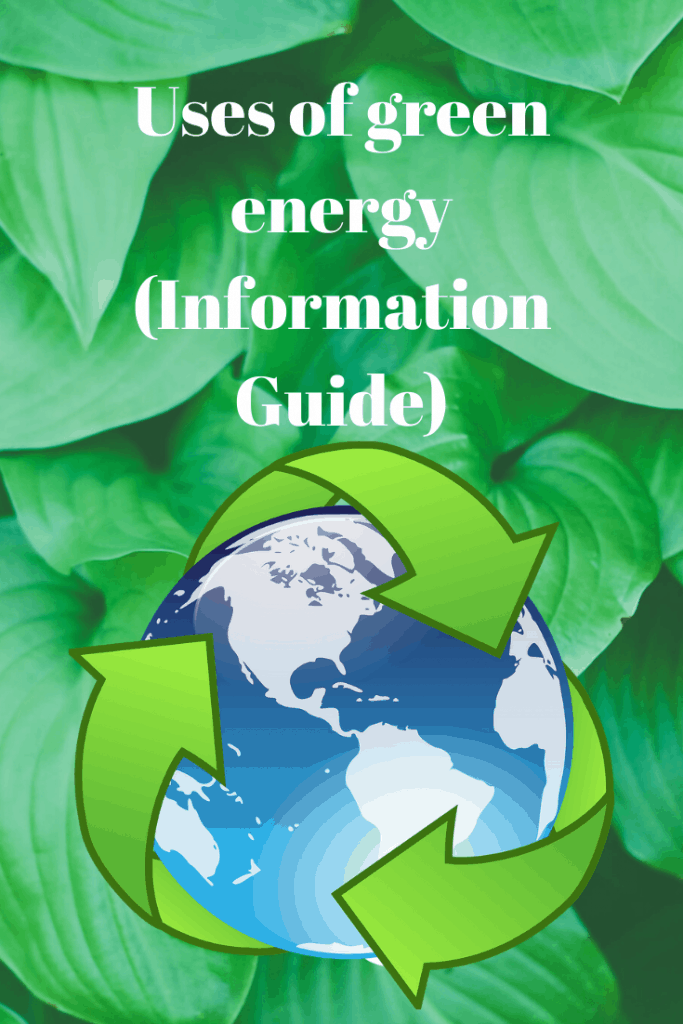
In this article, we will talk about what this concept means, why it is becoming so relevant and what are some of the uses of green energy in our society.
What is green energy?
The concept of green energy refers to a form of energy obtained from sources that, by definition, are renewable and can´t actually run out. This concept is similar to the concept of “alternative energy”.
Some of the most common sources to obtain green energy from are sunlight, rain, plants, and wind among others.
Why is green energy important?
The main reason why these “new” or “modern” types of energy are being so talked about lately on the news and in conversations, and why they seem to have so much importance in nowaday´s society is because they have a much smaller negative impact on the environment that other forms of energy such as fossil fuels which produce colossal amounts of greenhouse gases which contribute largely to climate change.
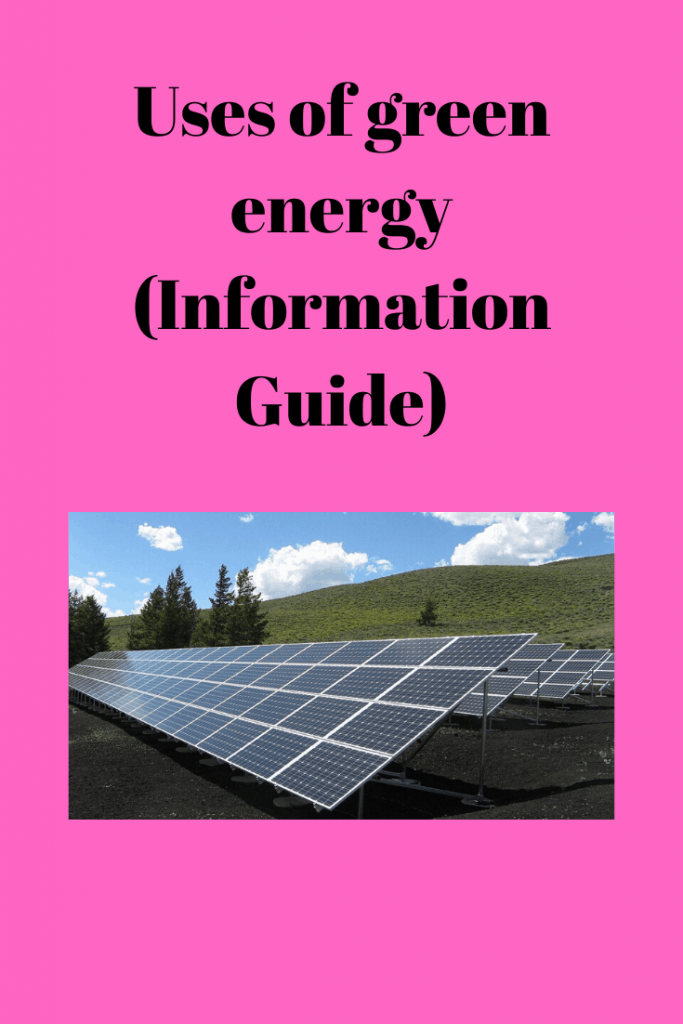
There is a big need in our society to increment the
What are some types of green energy?
Among the different types of green energy forms, we can find solar power obtained directly from the sun through solar panels, biofuels obtained by transforming organic materials of renewable nature into fuel, biomass obtained from natural waste, geothermal energy which consists on producing electricity from hot springs, hydropower which can also be called hydroelectric energy and consists on generating energy using the power of water and wind power, which uses turbines pushed by the wind to obtain electricity.
What are some uses of green energy?
As we previously mentioned, the consumption and overuse of fossil fuels are causing serious harm to the planet we live in and because of this, society is starting to introduce green energies to a great extent.
Some of the most common uses for these “modern” types of energy are the following:
- Production of heat through solar panels to heat up shower or sink water: the amount of electricity that is used in a day in the world just to heat water up is insane, and the pollution that comes from that use is very high as well, so using solar panels to produce this electricity can be very beneficial to our planet and in the long run, to humanity.
- Production of electricity for home use through, once more, solar panels: every day more people are integrating this system into their homes, as it allows them to save money and it is also beneficial to the planet in terms of pollution.
- Use of electricity produced by water power in urban areas: in cities and places with high populations the consumption of electricity is quite high, as we have mentioned before, harnessing the power from the water that is continuously flowing through the cityˋs sewer lines to generate electricity is becoming more popular.
Why is green energy important?
What is green energy?
When we speak about “green energy” what we are referring to all the energy that is obtained from natural resources which, by definition, can´t run out whether it is due to the immense amount of energy they contain or simply because they are renewable, meaning that they are continuously and naturally regenerating themselves.
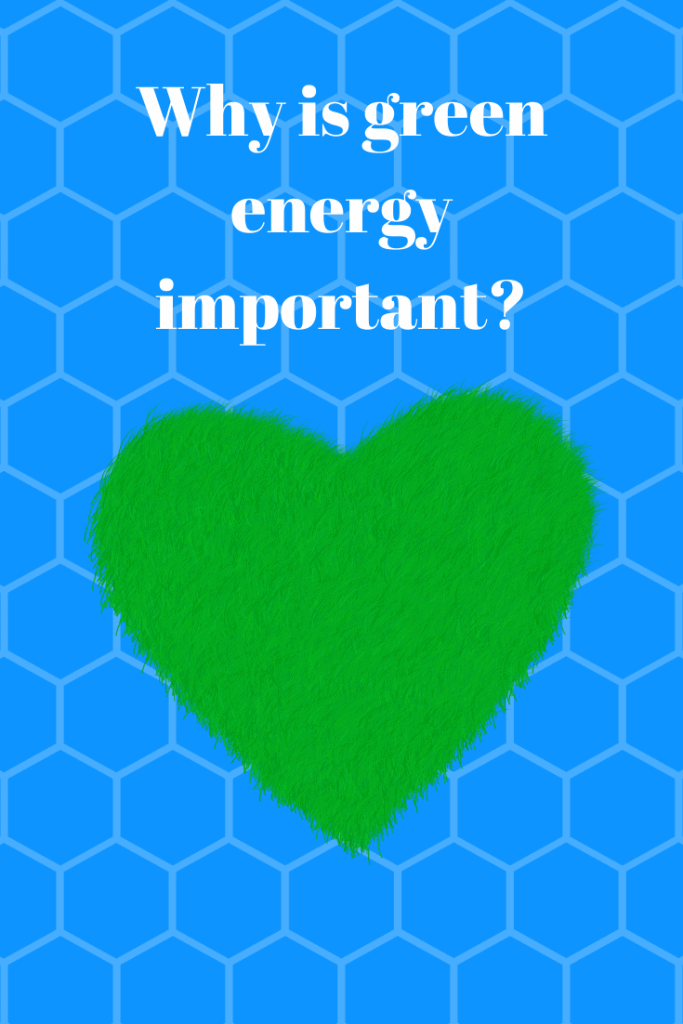
In this brief article, we want to talk to you about green energy explaining what it is and where it comes from but more importantly, our goal is to answer the question “why is green energy important?” expressing its impact in our actual society.
What are some green energy sources?
Green energy, as can be expected, can be obtained from a number of different sources such as the ones listed below:
- Wind power: in the latest years this source of green energy has been gaining popularity, especially in European countries. All over the world, there are tons of wind farms installed that are currently accounting for about 1,5% of the world´s electricity production.
- Solar power: another way of obtaining green energy is through the natural light from the sun. In plenty of counties, people are installing solar arrays on their homes to produce solar energy for personal use but there are also solar farms like the Topaz Solar Farm in California which are producing quantities of electricity that amount to 550W.
- Compressed Natural Gas: another form of green energy that is currently being used in some vehicles due to its environment-friendly characteristics is compressed natural gas. Despite its non-polluting character, this form of renewable energy has been descending in demand.
- Nuclear power: this form of renewable energy may actually be the safest and cleanest source of green energy even though there are lots of risks associated with it by society.
- Hydroelectric Power despite taking the last place on this list, is one of the most common sources of renewable green energy. This method for obtaining energy is characterized by using the power of water to generate electricity. In present times, hydroelectric power is responsible for the production of about 19% of the world´s electricity.
Why is green energy important?

The main reason why green energy is so important in nowadays´ society and why it is so talked about lately is that humanity can´t keep up its rhythm of consumption of fossil fuels because they are one of the main contributors to climate change and global warming. Live green here.
Replacing fossil fuels with green energy can bring along an improvement in the amount of pollution in the air and public health.

Using green energy will also be helpful to maintain the nation´s natural resources while enhancing energy security and providing a lower risk of fuel spills as well as the need to import those fuels from other countries which are quite expensive.
Related to this matter of costs, renewable energies can bring the lowering of energy prices as well as the creation of new job opportunities and the development of local industries.
Pros and Cons of Green Energy
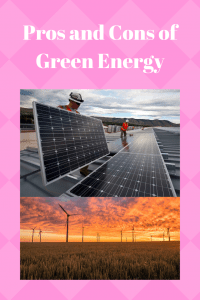
In this article, you will learn about Pros and Cons of Green Energy.Contentsshow
WHAT ARE GREEN ENERGIES?
The green energies, also called renewable energies, clean energies or ecological energies, are those from natural resources, in clean and inexhaustible principles because they regenerate naturally so that human beings can be supplied with them permanently.
Green energies take advantage of nature’s resources, such as the sun, water, and wind, so it doesn’t have a negative impact on the environment in the emission of greenhouse gases.
It’s totally healthy and will help conserve the environment for future generations because it will reduce the use of non-renewable energy (nuclear and fossil fuels) that causes damage to nature.
GREEN ENERGY EXAMPLES
- Solar energy, obtained from the sun.
- Wind energy, taking advantage of the wind.
- Hydraulic energy: it’s obtained from water currents.
- Tidal energy, obtained from the tides.
- Geothermal energy, obtained from the heat emitted from inside the earth.
PROS OF GREEN OR RENEWABLE ENERGY
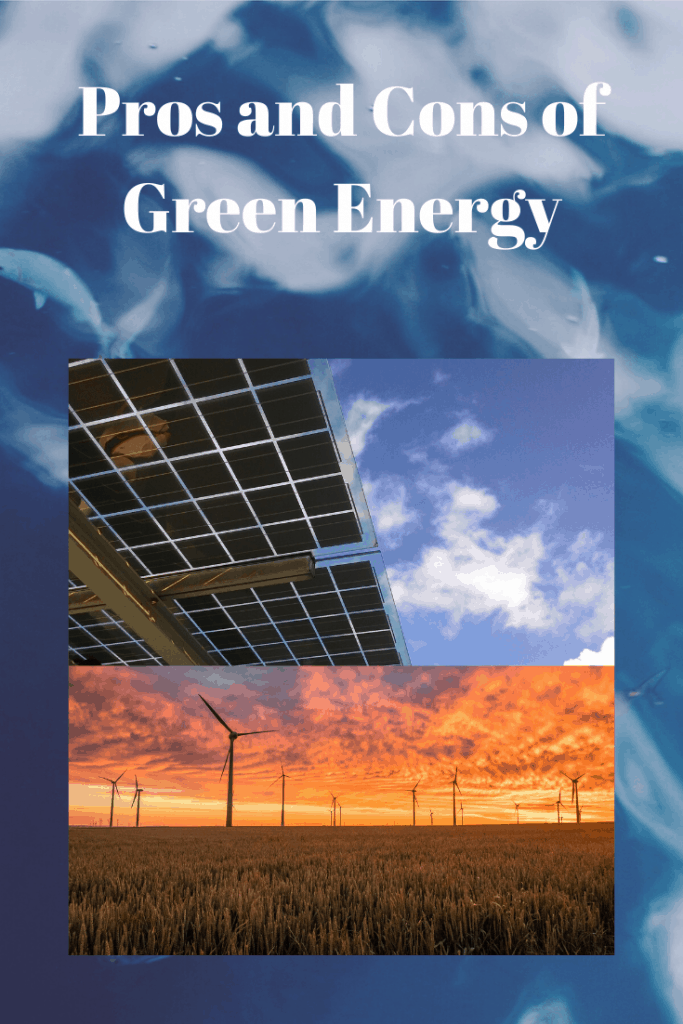
- Being from natural resources, they’re inexhaustible energy sources, quite the opposite of non-renewable energy.
- They don’t generate any type of waste, something very beneficial for the environment.
- The greenhouse effect is diminished since renewable energy doesn’t pollute the environment with CO2 emissions or any other polluting gas.
- They expand the number of jobs where such energy is applied since its obtaining and implementation is a bit more laborious.
- It helps create independence in the region because the industry and economy of the place where green energy is installed seek to produce and develop.
- In case of not requiring more of this type of energy, it can be easily dismantled.
- Depending on the geographical location and thanks to the different natural resources that can be used, they adapt to the need of the scenario.
CONS OF GREEN OR RENEWABLE ENERGY
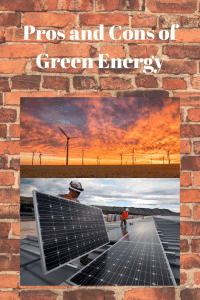
- A lot of space is needed to be able to develop the use of renewable energies depending on which source the energy is going to be obtained. The larger the land where the energy system will be implemented, the greater the production.
- The environmental factors directly affect the production of energy, so that renewable energies are totally dependent on the environmental conditions, that is, if the necessary conditions for obtaining energy are not presented, irregular or insufficient results are achieved.
- There is not much availability of equipment for the production and storage of green energies anywhere, because it’s something theoretically new and is becoming very popular, its demand is very high.
- The initial investment is large, although, in the long run, it will be more beneficial and profitable; it isn’t easy to disburse a large sum of money.
- Unlike solar, wind and hydraulic energy, geothermal energy is the only one of the renewable energies that pollutes the ecosystem in some parts, because it drags unwanted minerals and salts to the surface.
Lastly, green energies are constantly evolving; their definitive use in the near future would mean the conservation of the planet so that future generations can enjoy a pollution-free environment.
Although it has many more advantages than disadvantages, it’s important to take into account that with the advances that are made in the matter, these disadvantages will disappear.
How Much Green Energy Is Actually Being Consumed
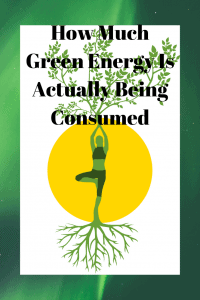
According to DirectEnergy.com, “green energy comes from natural resources.”
As a renewable energy source, they are created with finite materials like fossil fuels. We have to protect the environment with resources like green energy.
Green energy is an environmentally-friendly initiative.
Customers don’t have to worry about features like solar panels by utilizing natural resources.
In fact, green energy is a resource that can be used by both individual customers and businesses.
The following blog posts discuss how much green energy is being used by the Earth’s inhabitants.
How Much Of The Earth Uses Green Energy

There’s approximately 22 percent of green energy in the world.
More people are taking a look at green energy to save money and protect the environment.
However, there is enough green energy in the world to power every house for a year.
The Energy Information Administration (EIA) says; “that more people have to use green energy if the environment is expected to sustain itself for future generations.”
In 2018, 3 percent of all global mixed energy was powered by wind, but how many households were actually using it as a green energy resource?
We’ve put together a few statistics about current green energy resources.
Wind
Wind turbines are being used by 8 percent of the American population.
Most people are using the wind to power their homes with electricity. Wind in large shares can be a great natural resource.
Many people refer to it as hydroelectricity that is formed with biomass material also.
In fact, wind is one of the most valuable green energy resources in the energy network.
Sun
Harnessing the sun has been the primal geothermal green energy source.
Though not as durable as energy from wind, many people are currently using 38 percent of the green energy produced by the sun.
Fortunately, the sun contains a large amount of untapped energy that can be an asset to humans, animals, and plants.
A single small meter of sunlight after it passes through the atmosphere is still enough to power a single individual laptop or PC.
The sun also serves as the Earth’s predominant green energy source. Many customers are using green energy as a source of electricity.
More importantly, the sun serves as an affordable green energy source that’s being used by many businesses and residences across the nation.
Other Green Energy Resources:
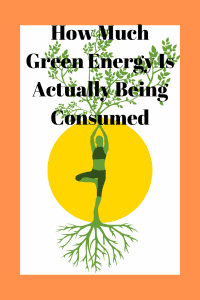
- coal
- oil
- compressed natural gas
- fossil fuels
- hydropower
- waves
The global electricity generation is expected to increase by 41 percent by 2041.
More people are committing to cleaner air by utilizing green energy resources for their home or business.
Green energy is expected to be used in more areas including transportation.
The truth is; “there is a considerable amount of green energy in the world, but more people are going to have to tap into it for it to have a positive impact on the environment.
Whether reclaiming the energy from the sun or trying to harness the wind to power impoverished communities, green energy continues to be a valuable resource to protect the environment and purify the air we breathe.
